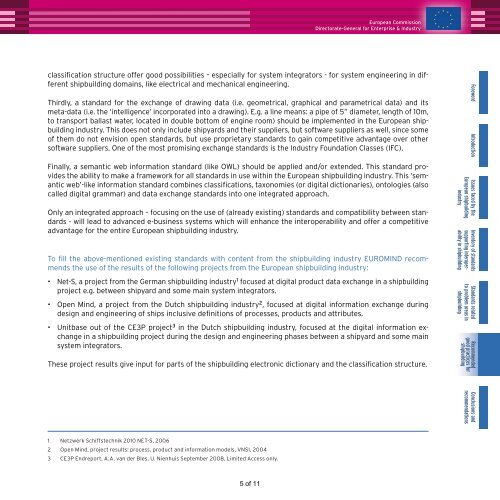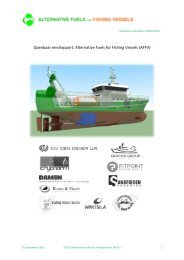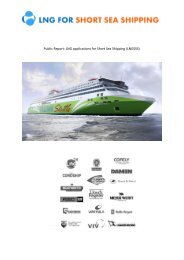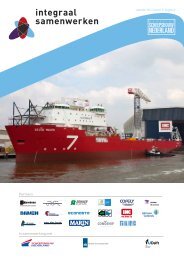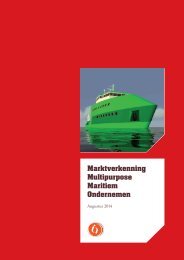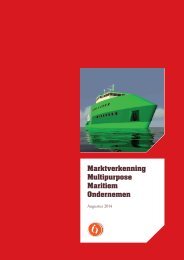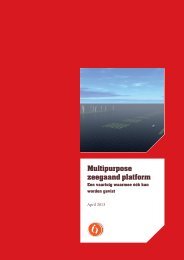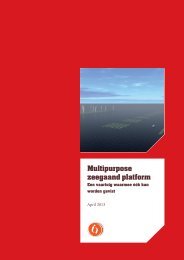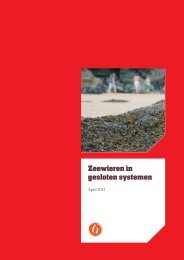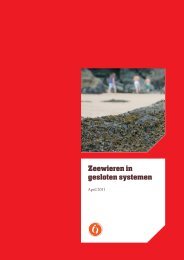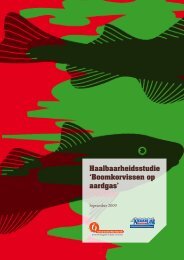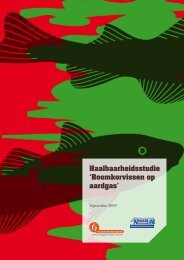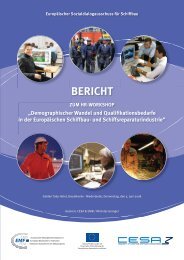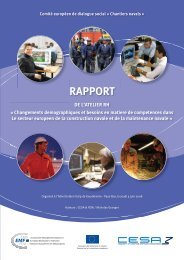Euromind (2009)
Creating an innovative European Open Maritime Industry through facilitating integration of standards into new business practices & services.
Creating an innovative European Open Maritime Industry through facilitating integration of standards into new business practices & services.
You also want an ePaper? Increase the reach of your titles
YUMPU automatically turns print PDFs into web optimized ePapers that Google loves.
European Commission<br />
Directorate-General for Enterprise & Industry<br />
classification structure offer good possibilities – especially for system integrators - for system engineering in different<br />
shipbuilding domains, like electrical and mechanical engineering.<br />
Thirdly, a standard for the exchange of drawing data (i.e. geometrical, graphical and parametrical data) and its<br />
meta-data (i.e. the ‘intelligence’ incorporated into a drawing). E.g. a line means: a pipe of 5” diameter, length of 10m,<br />
to transport ballast water, located in double bottom of engine room) should be implemented in the European shipbuilding<br />
industry. This does not only include shipyards and their suppliers, but software suppliers as well, since some<br />
of them do not envision open standards, but use proprietary standards to gain competitive advantage over other<br />
software suppliers. One of the most promising exchange standards is the Industry Foundation Classes (IFC).<br />
Finally, a semantic web information standard (like OWL) should be applied and/or extended. This standard provides<br />
the ability to make a framework for all standards in use within the European shipbuilding industry. This ‘semantic<br />
web’-like information standard combines classifications, taxonomies (or digital dictionaries), ontologies (also<br />
called digital grammar) and data exchange standards into one integrated approach.<br />
Only an integrated approach – focusing on the use of (already existing) standards and compatibility between standards<br />
- will lead to advanced e-business systems which will enhance the interoperability and offer a competitive<br />
advantage for the entire European shipbuilding industry.<br />
To fill the above-mentioned existing standards with content from the shipbuilding industry EUROMIND recommends<br />
the use of the results of the following projects from the European shipbuilding industry:<br />
• Net-S, a project from the German shipbuilding industry 1 focused at digital product data exchange in a shipbuilding<br />
project e.g. between shipyard and some main system integrators.<br />
• Open Mind, a project from the Dutch shipbuilding industry 2 , focused at digital information exchange during<br />
design and engineering of ships inclusive definitions of processes, products and attributes.<br />
• Unitbase out of the CE3P project 3 in the Dutch shipbuilding industry, focused at the digital information exchange<br />
in a shipbuilding project during the design and engineering phases between a shipyard and some main<br />
system integrators.<br />
These project results give input for parts of the shipbuilding electronic dictionary and the classification structure.<br />
Foreword Introduction Issues faced by the<br />
European shipbuilding<br />
industry<br />
Inventory of standards<br />
supporting interoperability<br />
in shipbuilding<br />
Standards related<br />
to problem areas in<br />
shipbuilding<br />
Recommended<br />
good practices for<br />
shipbuilding<br />
Conclusions and<br />
recommendations<br />
1 Netzwerk Schiffstechnik 2010 NET-S, 2006<br />
2 Open Mind, project results: process, product and information models, VNSI, 2004<br />
3 CE3P Endreport, A.A. van der Bles, U. Nienhuis September 2008, Limited Access only.<br />
5 of 11


